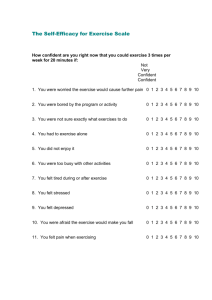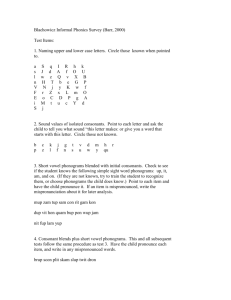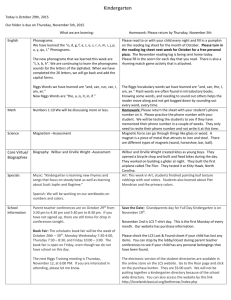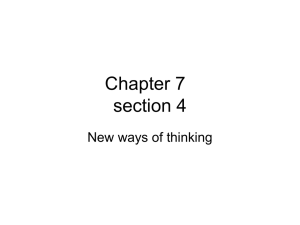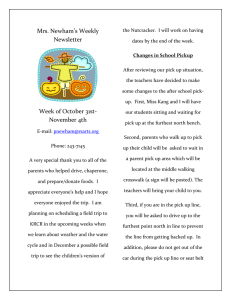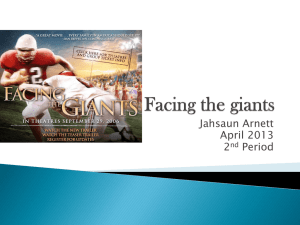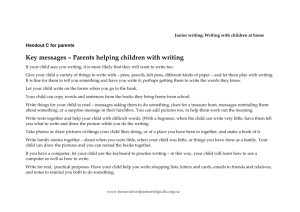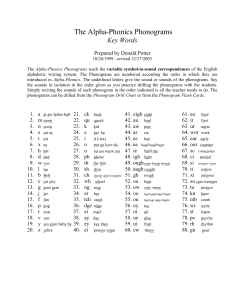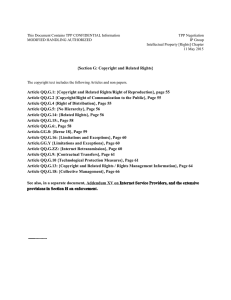Classroom Literacy Environment Checklist
advertisement
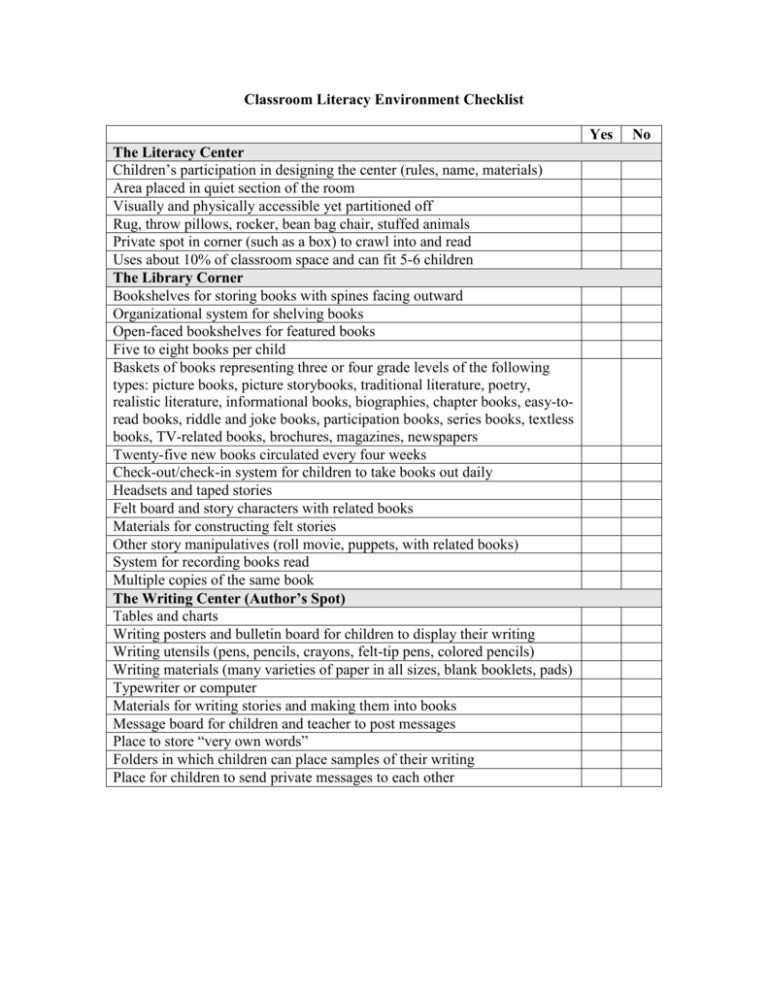
Classroom Literacy Environment Checklist Yes The Literacy Center Children’s participation in designing the center (rules, name, materials) Area placed in quiet section of the room Visually and physically accessible yet partitioned off Rug, throw pillows, rocker, bean bag chair, stuffed animals Private spot in corner (such as a box) to crawl into and read Uses about 10% of classroom space and can fit 5-6 children The Library Corner Bookshelves for storing books with spines facing outward Organizational system for shelving books Open-faced bookshelves for featured books Five to eight books per child Baskets of books representing three or four grade levels of the following types: picture books, picture storybooks, traditional literature, poetry, realistic literature, informational books, biographies, chapter books, easy-toread books, riddle and joke books, participation books, series books, textless books, TV-related books, brochures, magazines, newspapers Twenty-five new books circulated every four weeks Check-out/check-in system for children to take books out daily Headsets and taped stories Felt board and story characters with related books Materials for constructing felt stories Other story manipulatives (roll movie, puppets, with related books) System for recording books read Multiple copies of the same book The Writing Center (Author’s Spot) Tables and charts Writing posters and bulletin board for children to display their writing Writing utensils (pens, pencils, crayons, felt-tip pens, colored pencils) Writing materials (many varieties of paper in all sizes, blank booklets, pads) Typewriter or computer Materials for writing stories and making them into books Message board for children and teacher to post messages Place to store “very own words” Folders in which children can place samples of their writing Place for children to send private messages to each other No Yes Word Study Center Magnetic letters and phonograms Wooden letters and phonograms Cards with letters and phonograms Letter stamps Letter cubes and phonograms Prefixes, suffixes, and roots in magnetic, wooden, foam, cards, and felt forms Pocket chart Felt letters and felt board Word wall for high-frequency and other sight words Word wheels for constructing words Slates and markers Magnetic boards Word-sorting activities Word-building activities Skill development games (Concentration, Jeopardy!, Bingo, Lotto, card games) Puzzles for constructing words The Rest of the Classroom Environmental print, such as signs related to themes studied, directions, rules, functional messages Calendar Current events board Appropriate books, magazines, and newspapers Writing utensils Varied types of paper Place for children to display their literacy work Place for teachers and children to leave messages for each other Print representative of multicultural groups present in the classroom Content area centers present in the classroom (circle those appropriate) music art science social studies math dramatic play No
